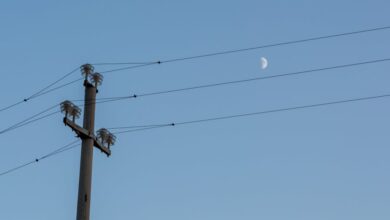The Science Behind the Sticker: What Exactly IS a Pimple Patch?

Ah, the humble pimple. A universal experience, yet one that still manages to send a jolt of dread through us, especially when it decides to make a grand entrance before a big event. For years, our arsenal against these unwelcome visitors often consisted of harsh spot treatments, attempting to dry them out with varying degrees of success (and often, subsequent dryness and irritation). Or, let’s be honest, strategically applied concealer – a temporary camouflage rather than a solution.
But then came the game-changer: the pimple patch. Suddenly, the idea of “slathering on concealer” felt almost archaic. Why cover it up when you could stick on a tiny, discreet patch and actually help it heal? If you’ve ever peeled off a patch to reveal a visibly flatter, less angry blemish, you know the magic is real. But what exactly is happening under that little sticker? How do pimple patches work their quiet, skin-saving sorcery? Let’s peel back the layers and understand the science behind this modern skincare marvel.
The Science Behind the Sticker: What Exactly IS a Pimple Patch?
At its core, the vast majority of effective pimple patches rely on a material called hydrocolloid. You might not recognize the name, but this isn’t some brand-new, space-age invention. Hydrocolloid has actually been a staple in the medical field for decades, used in wound care dressings to create an optimal healing environment for burns and ulcers. Its transition into the world of skincare was, frankly, a stroke of genius.
Think of hydrocolloid as a semi-occlusive, moisture-retentive dressing. It’s typically made of gel-forming agents like pectin, gelatin, or carboxymethylcellulose, embedded in an adhesive polymer. When it comes into contact with moisture – in our case, the fluid, pus, and oil from a breakout – these agents swell and form a soft gel. This gel essentially sucks up the excess fluid, creating a moist environment that’s incredibly conducive to healing.
So, when you stick a patch onto a burgeoning whitehead or a picked-at blemish, you’re not just covering it up. You’re applying a sophisticated mini-dressing that’s designed to interact directly with the breakout, drawing out impurities and setting the stage for faster, cleaner recovery.
How Pimple Patches Work Their Magic (Step-by-Step)
Understanding the “what” is one thing, but the “how” is where the true brilliance of pimple patches shines. It’s a multi-pronged approach that tackles a blemish from several angles, all while you go about your day (or sleep soundly).
1. The Absorption Act: Drawing Out Impurities
This is arguably the most satisfying part of the pimple patch experience. Once applied, the hydrocolloid acts like a tiny sponge. It gently, yet effectively, draws out the excess fluid, pus, and oil from inside the pimple. As these exudates are absorbed, they mix with the hydrocolloid, forming that familiar white, gooey substance you see under the patch when you remove it. This isn’t just “gunk,” it’s proof that the patch is actively working to clear out the pore.
By removing these impurities, the patch reduces the bulk and pressure within the blemish, which in turn helps to flatten it and lessen its angry appearance.
2. The Protective Barrier: Shielding from Harm
Beyond absorption, the patch provides a physical barrier. This might seem simple, but its benefits are profound. Firstly, it keeps external bacteria, dirt, and pollutants from entering the open or vulnerable pore. This is crucial for preventing secondary infections and further inflammation.
Secondly, and perhaps most importantly for many of us, it stops picking. We’ve all been there – that irresistible urge to “help” a pimple along, only to make it worse, inflamed, and leave behind a lasting scar. The patch acts as a gentle but firm deterrent, preventing our fingers from doing more damage.
3. The Moist Healing Environment: Accelerating Recovery
Traditional wisdom often told us to “dry out” a pimple. However, modern wound care (and now skincare) has shown that a moist environment is far superior for healing. The hydrocolloid patch creates exactly this: a sealed, humid micro-environment around the blemish. This prevents the formation of a hard, crusty scab, which can impede healing and lead to more noticeable scarring.
In a moist environment, skin cells can migrate and regenerate more effectively, reducing inflammation, promoting tissue repair, and ultimately leading to faster, cleaner healing with a reduced risk of hyperpigmentation or scarring.
Beyond the Basics: Different Types and When to Use Them
While the classic hydrocolloid patch remains the hero, the world of pimple patches has evolved, offering specialized solutions for different types of breakouts.
Original Hydrocolloid Patches
These are your go-to for whiteheads, pustules, and any pimple that has come to a head and is ready to “drain.” They excel at drawing out the pus and creating that optimal healing environment. They are typically clear, discreet, and ideal for overnight use or even during the day if you don’t mind a barely-there sticker.
Medicated or Ingredient-Infused Patches
Some patches go a step further by incorporating active ingredients directly into the hydrocolloid or onto the adhesive side. Common additions include:
- Salicylic Acid: A beta-hydroxy acid that helps to exfoliate within the pore, breaking down oil and dead skin cells. Great for clogged pores and early-stage breakouts.
- Tea Tree Oil: Known for its antimicrobial and anti-inflammatory properties, making it beneficial for inflamed or bacterial breakouts.
- Niacinamide: Helps reduce redness and inflammation, and supports the skin barrier.
These are excellent for targeting specific concerns, especially those stubborn, inflamed bumps that aren’t quite ready to pop but need a little extra persuasion.
Microneedle Patches
For deeper, more stubborn breakouts – think cystic or nodular acne that lurks beneath the surface – microneedle patches are a game-changer. These patches feature tiny, dissolvable needles (don’t worry, they’re typically painless and microscopic) that create micro-channels in the skin. This allows active ingredients, such as salicylic acid, hyaluronic acid, or peptides, to penetrate deeper into the blemish, where topical creams might struggle to reach. They are designed to deliver targeted treatment directly to the source of inflammation, helping to calm and reduce those painful, underground bumps.
Getting the Most Out of Your Pimple Patch: Tips for Success
To truly harness the power of pimple patches and ensure you’re getting the best results, a few simple best practices go a long way.
- Clean Skin is Key: Always apply patches to clean, dry skin. Any oils, moisturizers, or serums on the skin can prevent the patch from adhering properly and working effectively.
- Target the Right Blemish: Hydrocolloid patches are best for whiteheads or pustules. They won’t do much for blackheads (which are oxidized oil, not fluid-filled) or deep, uninflamed bumps (unless it’s a microneedle patch).
- Patience, Patience: Leave the patch on for at least 6-8 hours, or until it turns opaque white and looks “full.” For particularly juicy breakouts, you might even notice it working within a few hours.
- Don’t Reapply: Once you remove a patch, it’s done its job. Don’t try to reapply the same one. Use a fresh patch if needed.
- Complement, Don’t Replace: Pimple patches are an excellent spot treatment, but they’re not a substitute for a consistent, overall skincare routine that includes cleansing, moisturizing, and sun protection.
- Listen to Your Skin: If you experience any irritation, redness, or discomfort, remove the patch immediately. While generally gentle, everyone’s skin is different.
The Future is Clear: Embracing Smart Skincare Solutions
Pimple patches represent a significant leap forward in targeted acne care. They’ve moved us beyond aggressive drying agents and into an era of intelligent, healing-focused solutions. By understanding how pimple patches work – the clever science behind hydrocolloid absorption, the protective barrier they offer, and the optimal healing environment they create – you can better appreciate their role in maintaining clear, healthy skin.
So, the next time an unwelcome spot threatens to derail your day, consider reaching for a pimple patch. It’s a small, unassuming sticker that packs a powerful punch, offering a discreet, effective, and satisfying way to tackle breakouts head-on, allowing your skin to heal beautifully without the need for constant camouflage. In the ever-evolving landscape of skincare, the pimple patch stands as a testament to the power of targeted, gentle, and undeniably brilliant innovation.





